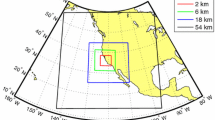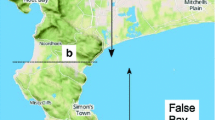Summary
Hurricanes cause a variety of damage due to high winds, heavy rains, and storm surges. This study focuses on hurricanes’ high winds. The most devastating effects of sustained high winds occur in the first few hours of landfall. During the short period, hurricanes’ rainfall often increases, while the low-level pressure gradients continue to weaken. Latent heating does not appear to strengthen the surface winds. The indicator is that dry mechanisms such as the boundary layer processes and terrain are responsible for the damaging winds in the coastal areas. In this study, the design of a dry hurricane boundary layer wind model is described. The goal is to develop a forecast tool with near-real time applications in expeditious wind damage assessment and disaster mitigation during a hurricane landfall event.
Different surface roughness lengths and topographic features ranging from flat land to the mountainous terrain of Taiwan were used in the model simulation experiments to reveal how the coastal environment affected the hurricane surface winds. The model performed quite well in all cases. The experiments suggested that the downward transfer of high momentum aloft played a significant role in the maintenance of high wind speeds at the surface. The surface wind maximums were observed on the lee sides of high terrain. The surface streamline analyses showed that the high mountains tended to block the relatively weak flow and caused small eddies, while they forced the stronger flow to turn around the mountains.
Due to great difficulty in data collection, the hurricane boundary layer over land remains one of the least understood parts of the system. The dry model proves to be an effective way to study many aspects of hurricane boundary layer winds over a wide range of terrain features and landfall sites. The model runs efficiently and can be run on a medium-size personal computer.
Similar content being viewed by others
Author information
Authors and Affiliations
Additional information
Received March 16, 2001 Revised September 10, 2001
Rights and permissions
About this article
Cite this article
Kasheta, T., Chang, CB. Development of a hurricane boundary-layer wind model. Meteorol Atmos Phys 79, 259–273 (2002). https://doi.org/10.1007/s007030200007
Issue Date:
DOI: https://doi.org/10.1007/s007030200007




